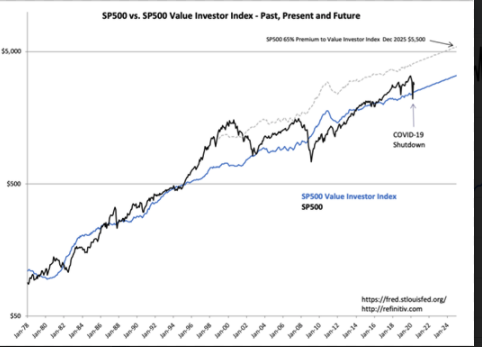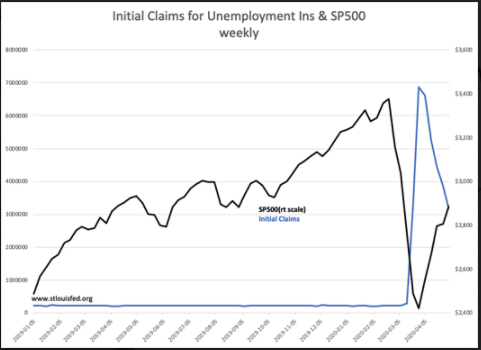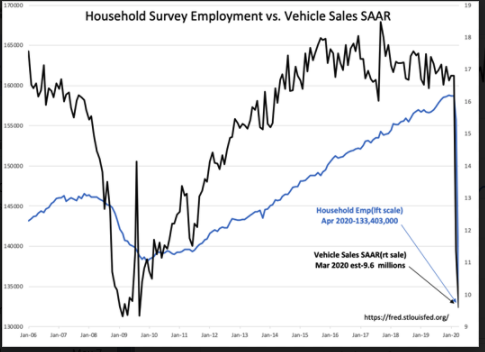“Davidson” submits:
Household Survey report indicates a loss of 22,369,000 in employment. This adds to the previous month’s report making the total employment loss from March 2020 23,369,000. Vehicle Sales have plummeted to 9mil SAAR(Seasonally Adjusted Annual Rate). But, the Dow looks like it will rise by 300pts on this news. The experts are confounded. They see no reason for higher equities for a long period. The answer lays in employment trends, not any particular monthly number.
The government response to COVID-19 was to shutdown person-to-person contact and isolate individuals to their homes. This was a self-imposed recession not one historically caused by a period of economic and investment excess. The economic signs were very strong prior to COVID-19 with leverage risk in the economy near 17yr lows. This is not the typical recession. Economic strength of March 2020 remains mostly intact as long as government permits people to go back to work shortly. A key indicator is the weekly Claims for Unemployment Insurance. The SP500 has a 50yr history of turning higher the week or a few weeks after the weekly Initial Claims levels peaks. It is the improving trend in Initial Claims which has been the trigger to improve market psychology. The only times this did not occur were due to unexpected events such as the World Trade Center attack, Sept 11, 2001. The same month Initial Claims peaked and the Chemical Activity Barometer(CAB) turned higher signaling economic expansion but the SP500 took another downturn for 12mos,
Initial Claims and the CAB are hard counts of economic activity. The SP500 is not. Many conflate SP500 with economic activity but it represents only the market-psychology-driven perceptions of investors. Analysis shows that SP500 pricing does not lead economic activity but follows after-the-fact. The Initial Claims weekly & SP500 clearly shows that the peak in Initial Claims the week of March 23, 2020 correlates with the low in the SP500. As Initial Claims peaks and trends lower, a few investors grow more positive anticipating economic recovery which turns the SP500 higher. The actual low in the SP500 was in pre-market trading and insider buying soared to more than 4:1 over sellers exceeding the 1:2 historical ratio by a factor of 8x.
Insider buying is a signal that market valuations are low enough to attract Value Investors. The SP500 Value Investor Index(VII) is named in part for such activity. The VII is a fundamental measure of SP500 historical valuation which assesses the long-term SP500 median earnings trend using an inflation measure and the long-term GDP growth rate. An earnings capitalization rate is derived from GDP and inflation data called the ‘Natural Rate’, a concept proposed by Knut Wicksell in 1898. Insiders and Value Investors dominate market buying at levels when SP500 falls to the VII and market bottoms are formed. Market-psychology-driven pricing always makes this an imprecise relationship. The SP500 fell below $2,100 in pre-market creating an ~11% discount to the VII March 23, 2020.
The SP500 has since recovered to an 18% premium to the VII. The historic relationship between the SP500 and the VII indicates that a 65% premium tends to mark peaks in the SP500 since 2000. The VII is extended to 2025 for perspective with $5,500 a potential for the SP500. Investors need to keep in mind that prices come from market psychology and often vary significantly from fundamental measures.
It appears we are working through the current pessimism and markets should be significantly higher going forward without additional economic threats.


